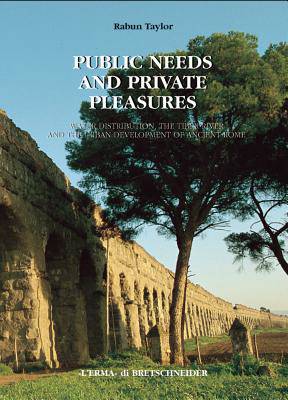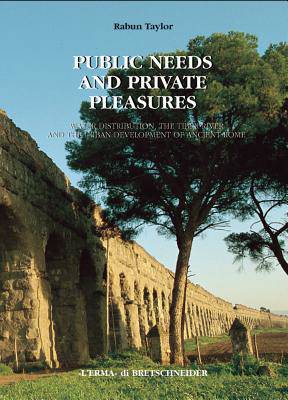
- Afhalen na 1 uur in een winkel met voorraad
- Gratis thuislevering in België vanaf € 30
- Ruim aanbod met 7 miljoen producten
- Afhalen na 1 uur in een winkel met voorraad
- Gratis thuislevering in België vanaf € 30
- Ruim aanbod met 7 miljoen producten
Zoeken
Public Needs and Private Pleasures
Water Distribution, the Tiber River and the Urban Development of Ancient Rome
Rabun Taylor
€ 264,95
+ 529 punten
Omschrijving
A meticuously detailed investigation of Rome's practical solution to the problems of providing and distributing the city's water supply between the end of the Republic and Trajan's reign. Taylor's principal aims are to determine where and why aqueduct systems crossed the Tiber and to assess the function of the enigmatic Aqua Alsietia. An initial discussion of the technical and legal context for aqueduct planning is followed by a topographical inquiry into several specific aqueducts including the four earliest aqueduct river crossings: the Aqua Appia, Anio Velus, Aqua Marcia and the Aqua Virgo. Taylor also examines the expansion and organisation of water supply within the Transiberim, a heavily populated district of Rome to the west of the Tiber, and assesses its influence on Rome's wider urban policy.
Specificaties
Betrokkenen
- Auteur(s):
- Uitgeverij:
Inhoud
- Aantal bladzijden:
- 290
- Taal:
- Engels
- Reeks:
- Reeksnummer:
- nr. 109
Eigenschappen
- Productcode (EAN):
- 9788882651008
- Verschijningsdatum:
- 31/12/2000
- Uitvoering:
- Hardcover
- Formaat:
- Genaaid
- Gewicht:
- 149 g

Alleen bij Standaard Boekhandel
+ 529 punten op je klantenkaart van Standaard Boekhandel
Beoordelingen
We publiceren alleen reviews die voldoen aan de voorwaarden voor reviews. Bekijk onze voorwaarden voor reviews.











